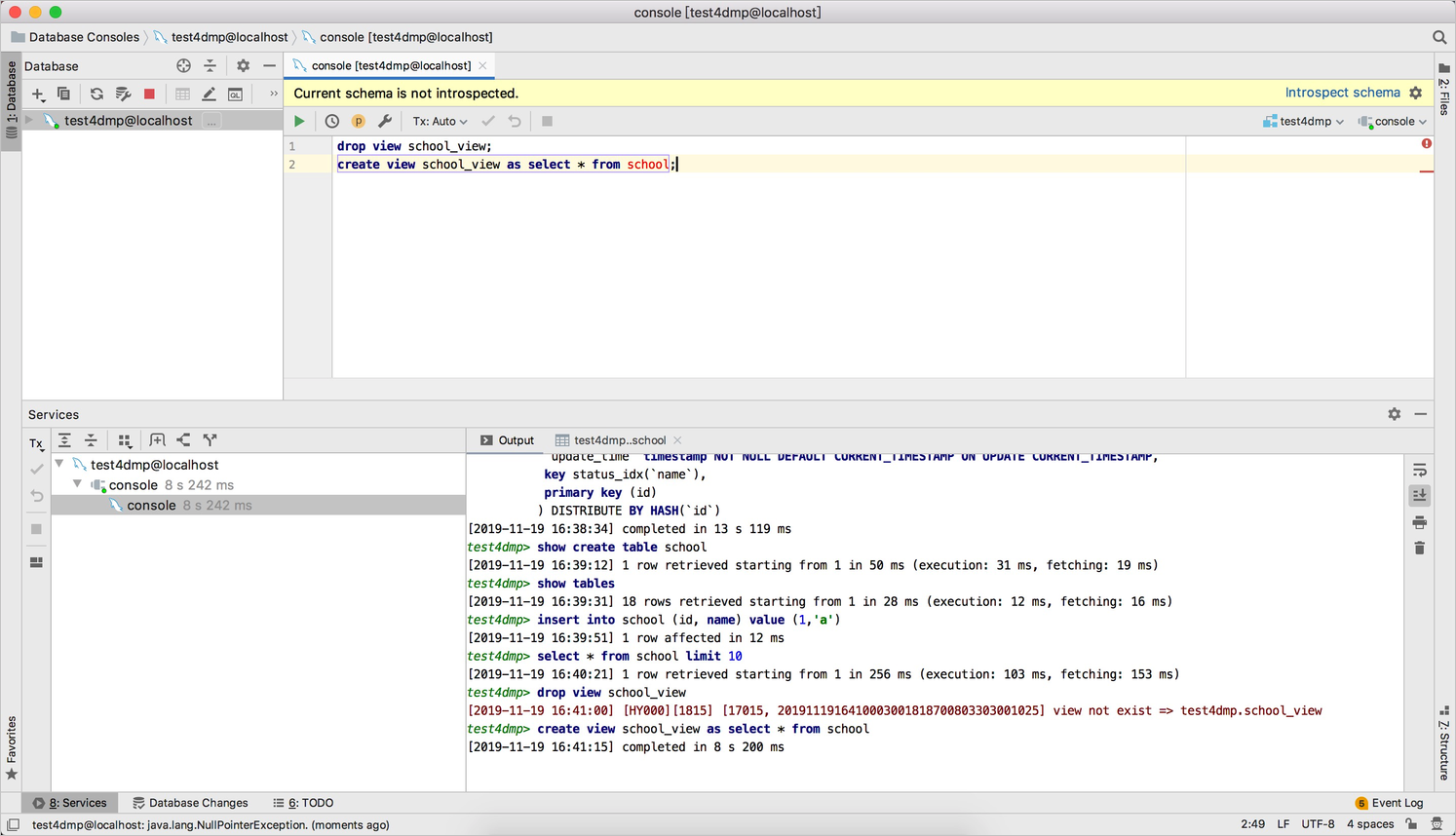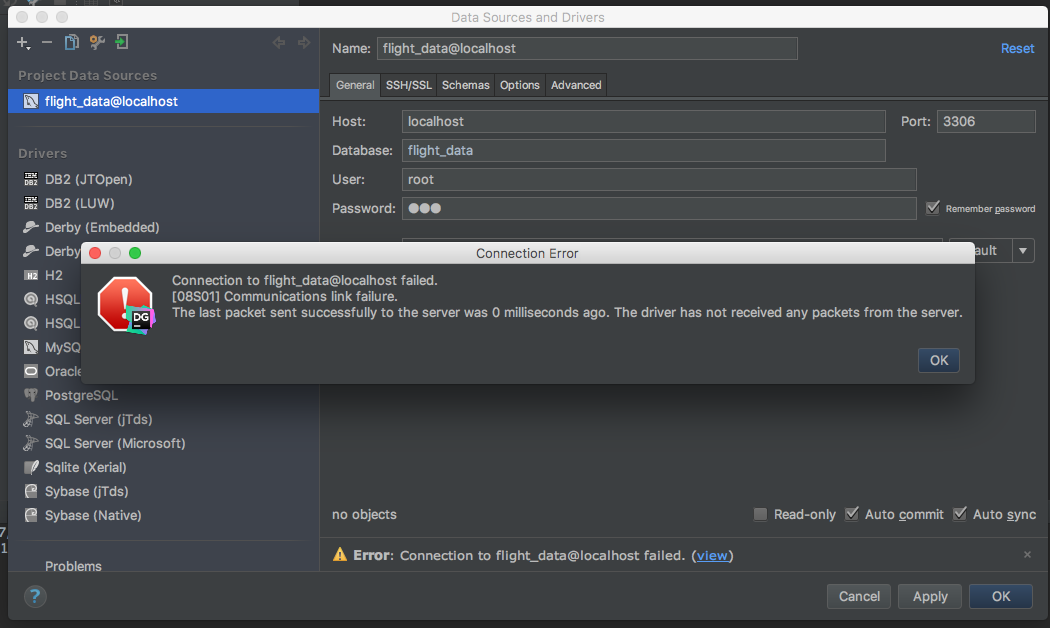

Datagrip mysql password#
Then you can create a new Data Source, and set the properties to host = localhost, user = my_test_db_user, and password = keyboard_cat. datagrip Share Follow asked at 17:55 Abduhafiz 3,298 5 38 47 It's not possible there is no UI for this. Grant all privileges on my_test_db to my_test_db_user Similarly, to create a new user for this data base, create a new sql file "create_my_test_db_user.sql" create user my_test_db_user with encrypted password 'keyboard_cat' DataGrip has a drop-down menu in the upper-right corner above your file menu, so make sure you have selected since this is the user Data Source that has privileges to create a new database. When you want to execute this code, make sure that you are using the correct "console". I like to keep track of all the commands I have run by attaching a new directory (File Menu | Attach Directory) and creating new files with descriptive names, such as "create_my_test_db.sql" and enter the sql to create the database: create database my_test_db As with other tool windows, you can start typing the name of an image or container to highlight the matching items.įor more information, see the section about Docker in Services tool window.The tricky part of creating a new database, is that you have to do it using a DataGrip "Data Source" where are are connected as a user that has the priviledge to create a database, which is generally the "admin" user that you added when you first installed Postgres which is connected to the main "postgres" database. Once you connect to the Docker daemon, you can use the Services tool window ( View | Tool Windows | Services or Alt+8) to manage everything related to Docker, for example: pull and push images, create and run containers, and scale Docker Compose services.

If you have Docker contexts configured, you can select Docker Connections from Docker Contexts to add the corresponding connections. You can also click and select Docker Connection to add a Docker connection directly from the Services tool window. To edit the Docker connection settings, select the Docker node and click on the toolbar, or select Edit Configuration from the context menu. Open the Services tool window ( View | Tool Windows | Services or Alt+8), select the configured Docker connection node and click, or select Connect from the context menu. This table is not available on a Linux host, where Docker runs natively and you can mount any directory to the container. You will not be able to use volumes and bind mounts for directories outside of the mapped local path. The Connection successful message should appear at the bottom of the dialog.įor more information about mapping local paths to the virtual machine running the Docker daemon when using Docker on Windows or macOS, see Virtual machine path mappings for Windows and macOS hosts. The connection settings depend on your Docker version and operating system.
Datagrip mysql how to#
Press Control+Alt+S to open the IDE settings and select Tools | Build | Docker.Ĭlick to add a Docker configuration and specify how to connect to the Docker daemon.
Datagrip mysql install#
Install and run Docker as described in Docker documentation.ĭataGrip supports alternative Docker daemons: Colima and Rancher Desktop (with the dockerd engine). Open the Marketplace tab, find the Docker plugin, and click Install (restart the IDE if prompted). Press Control+Alt+S to open the IDE settings and select Plugins.

This functionality relies on the Docker plugin, which you need to install and enable.
Datagrip mysql code#
This may be useful, for example, to test code in an environment identical to production.ĭataGrip integrates the Docker functionality and provides assistance for creating Docker images, running Docker containers, managing Docker Compose applications, using public and private Docker registries, and much more directly from the IDE. Docker is a tool for deploying and running executables in isolated and reproducible environments.


 0 kommentar(er)
0 kommentar(er)
